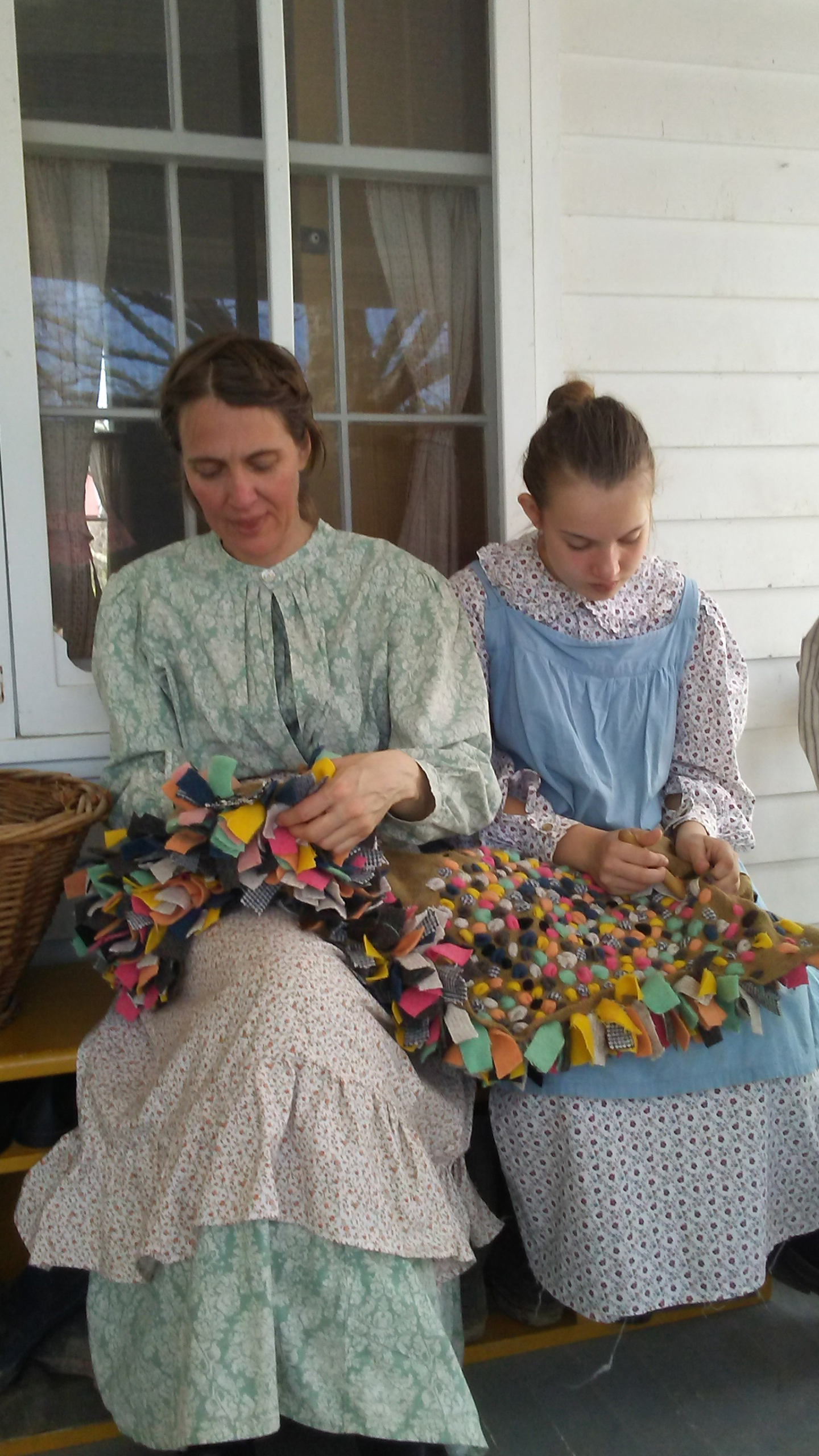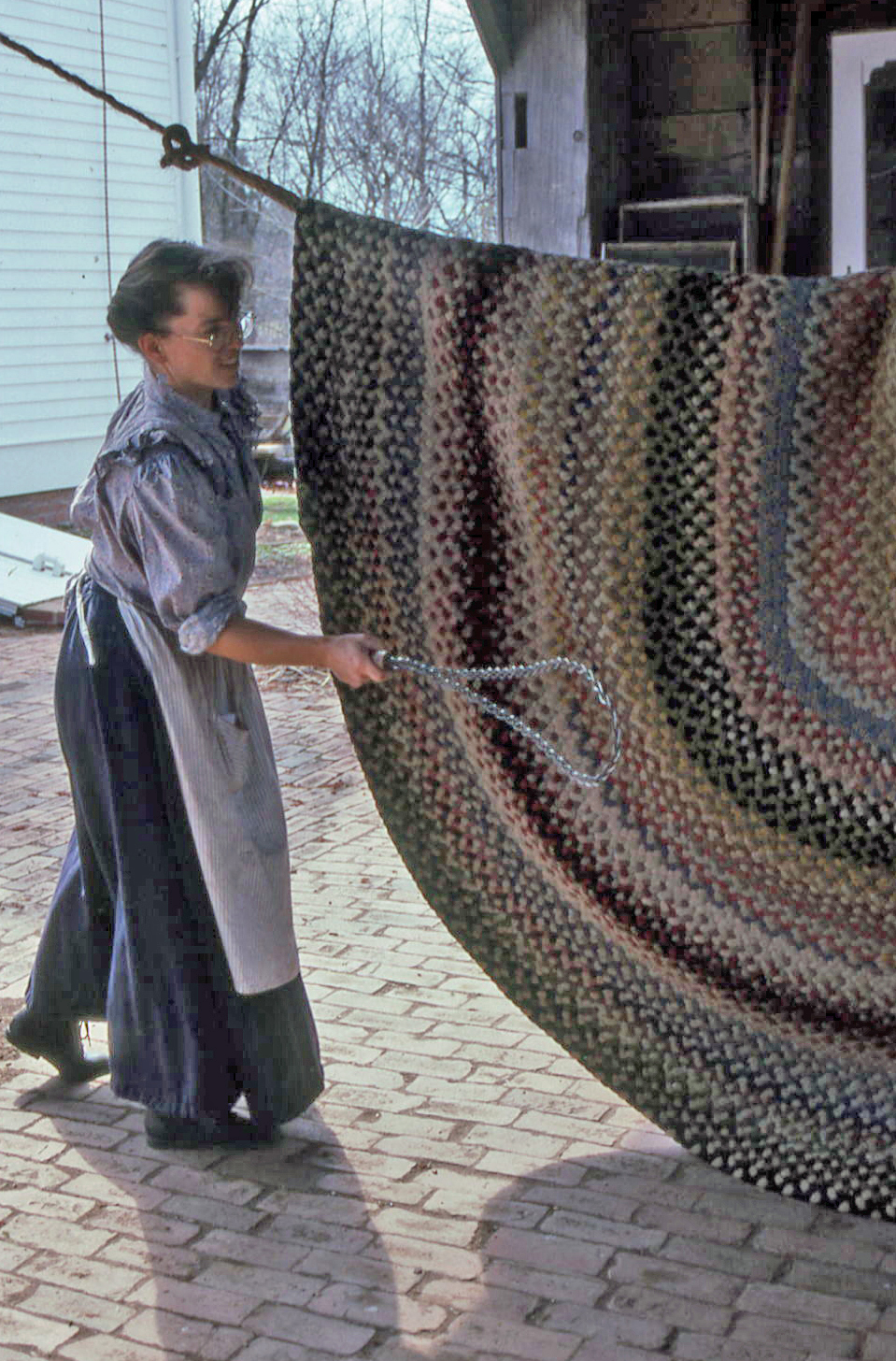DONNA ABEL
Interpretive Aid at Slate Run Farm
Today’s homes are usually adorned with wall-to-wall carpet, area rugs, scatter rugs or door mats. However, prior to the 19th century, factory-made carpets were simply not available and hand-made carpets, woven on hand looms, were very expensive and only affordable to the wealthiest homeowners. Once mechanical looms were developed in the early 1800s, textile mills sprung up along the eastern seaboard and commercial carpeting became available around 1830. Unfortunately, it was still expensive and lower and middle class women began making handmade rugs to decorate their homes.

By 1880, the time period depicted at Slate Run Living Historical Farm, factory made rugs were readily available and within financial reach of most Ohio farm families. Home produced rugs continued to be made due to frugality, cultural heritage and artistic interest. Historic rug making took several different forms and incorporated leftover or reused materials.
One of the most common were those made of strips of old clothing and woven on a loom. But there were many other variations, not as well-known including braided, shirred, prodded, and hooked rugs. Braided rugs were made by braiding three long strips of wool and eventually stitching the braids together into a round, oval, or other shaped rugs. Another is the shirred rug. A shirred rug required folding a wool strip accordion-style on a long needle and thread. Piece after piece of fabric was added onto the needle and thread until the long shirred pieces could be stitched together, similar to finishing a braided rug. Prodded rugs were constructed by looping short pieces of wool through a burlap backing, leaving the ends sticking up on one side to form a shaggy rug – somewhat like a modern latch-hooked rug. Perhaps the most popular type of homemade rug in the 1800’s however was the hooked rug, in which narrow strips of wool or yarn were pulled up through a
backing, leaving short loops on one side of the backing fabric.

Since wool All of these rugs utilized wool yarn or fabric since wool is very durable and was widely available. Those who worked at textile mills had access to the scrap pieces of yarn or cloth. Other rug makers, who didn’t live near fabric or yarn mills, used old clothing or leftover fabric scraps. Fabric scraps from the “rag bag” were often used, giving homemade rugs the nickname rag rugs. Rugs that required a backing, such as hooked or prodded rugs, were generally made with a burlap backing since burlap was widely available from used feed bags and was available for free.
What once began out of necessity for the lower and middle class, has now become popular as folk art and collectors often seek out antique rugs. Many people enjoy making rugs, especially hooked and braided rugs. Kits and supplies are readily available however it is no longer a poor person’s activity as many of these items, especially the wool, can be quite pricey!

cattail were once used as matting rather than rugs. i have seen similar made out of plastic bags, which are very warm.